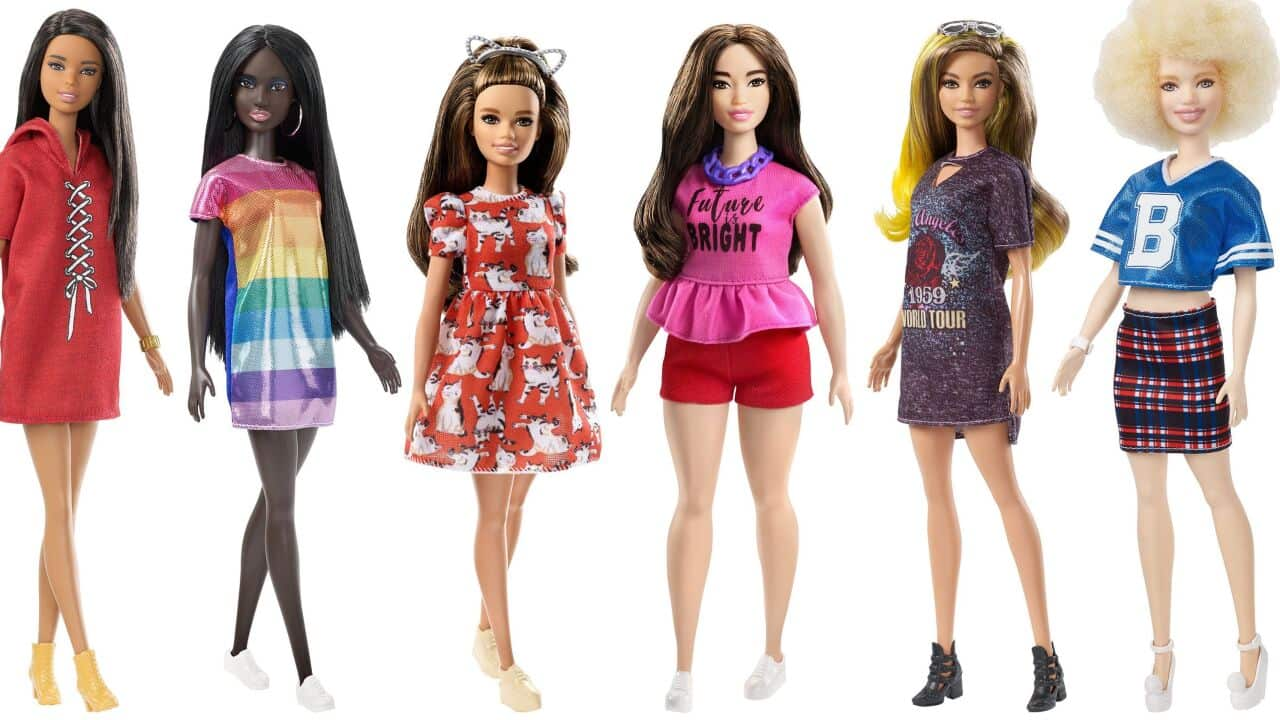“It’s important to be reflective of culture," says Kim Culmone, Vice President of Barbie Design, in documentary Barbie: The Most Famous Doll in the World. Maybe that’s why, in the weeks prior to our government voting to legalise marriage equality, Barbie was reflective of Australian culture in in an Instagram post.
The photo was part of a partnership with fashion designer Aimee Song, who earlier this year released human-sized versions of the “Love Wins” T-shirts Barbie and a doll version of Song wear in the viral post, .
Barbie’s modelling of the T-shirts harks back to her origins as a teenage fashion model. Named after creator Ruth Handler’s daughter, Barbara, the doll was conceived in the 1950s as a response to the lack of adult or older girl dolls on the market.
Since then, Barbie has branched out from modelling to such varied careers as an astronaut, veterinarian and computer engineer, and .
“Barbie has always given girls choices — from her 180 careers to inspirational roles to her countless fashions and accessories,” Evelyn Mazzocco, Senior Vice President and Global General Manager of Barbie, has .
But the doll hasn’t always been a pioneer. In addition to the decades-long debate surrounding her effect on body image, Barbie elicited controversy in the 1990s, for example, with the advent of Teen Talk Barbie, who uttered phrases such as “Math class is tough!” and “I love shopping!”. And then there was Share a Smile Becky, Barbie’s friend with a disability whose wheelchair .
For every misstep, Mattell, the company that makes Barbie, has been quick to address areas in which they've fallen short. In a move that mirrors Culmone’s statement about reflecting culture, in 2016, Mattel produced a line of Fashionista Barbies with diverse body shapes, skin and hair colours.
“We are excited to literally be changing the face of the brand — these new dolls represent a line that is more reflective of the world girls see around them — the variety in body type, skin tones and style allows girls to find a doll that speaks to them,” Mazzocco explained in a press conference for the release of the range.
Mattel continues to produce one-of-a-kind Barbies for real women who “break boundaries and expand possibilities for women everywhere” as part of their range, which includes director Ava DuVernay, plus-sized model Ashley Graham, and Olympians Gabby Douglas and Ibtihaj Muhammad, the first Barbie to wear a hijab. In keeping with Barbie’s support of queer rights, US soccer star Abby Wambach, who is gay, had a Barbie in her likeness made in 2016.
In the past, Barbie has chosen her causes carefully, showing a about being too outspoken on topics like voting, which has preserved her status as the everywoman rather than risking alienating a section of the public with explicit political ideologies. But that hasn’t stopped others from misappropriating her image to suit their own ends.
When US politician Wendy Davis, who filibustered for reproductive rights, was called “Abortion Barbie” in 2013, . Similarly, US vice presidential candidate Sarah Palin had the epithet “Caribou Barbie” — a play on Malibu Barbie — levelled at her by her political opponents. More recently, Canadian Minister of Environment and Climate Change Catherine McKenna made headlines in November when she “Climate Barbie”. Meanwhile, the only time Barbie has plunged this far into politics was when Handler the doll has always “represented the fact that a woman has choices”.
The influx of modern Barbies takes the doll’s impressive resume and makes her “You Can Be Anything” more accessible by providing real-life role models in those fields.
Of course, Barbie still has a way to go in regards to her physical presentation, a fact critics of the doll are quick to point out. Whereas some of the contemporary women and careers Barbie has represented are celebrated for their achievements rather than (or, at the very least, in addition to) their looks, the doll is still rigidly "beautiful". And the women and girls she is marketed to may value that above all other career and life aspirations.
But this may be temporary. According to Culmone in Barbie: The Most Famous Doll in the World, as long as societal conventions of what it means to be a woman continue to change, Barbie will need to follow suit to remain relevant.
“If we say that Barbie has always been a sign of the times and we march out all these body types that are exactly the same; all these blonde, white girls, that is certainly not reflective of the times,” she says in reference to the Fashionista range. “I don’t know that this thing in isolation is the saviour of Barbie. I think the mindset and the thinking and the spirit that led to us being brave enough to make a change that was risky for the brand will be the saviour of Barbie."
We’ll have to wait and see...
Watch Barbie: The Most Famous Doll in the World on SBS this Sunday 16 December at 10:20pm and at SBS On Demand.




